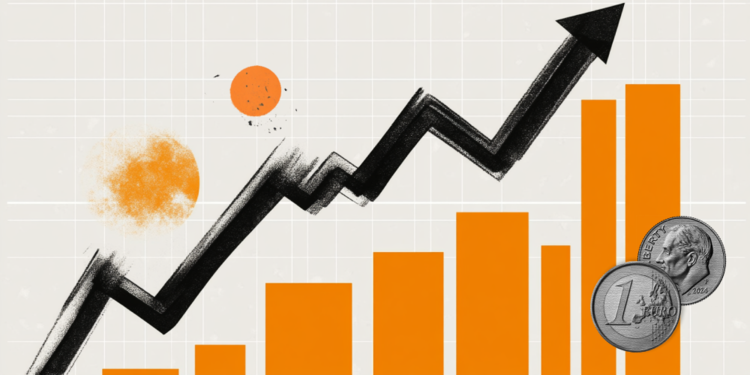- USD/CAD hits fresh eight-month high near 1.3850 as US Dollar rebounds on positive US Q2 GDP growth
- Easing inflation pressures keep Fed rate cut prospects intact.
- The BoC cut interest rates again by 25 basis points, as expected.
The USD/CAD pair renewed an eight-month high near 1.3850 in the New York session on Thursday. The pair strengthened as the US Dollar (USD) has recovered strongly following positive second-quarter Gross Domestic Product (GDP) growth in the United States (US).
The preliminary US GDP report showed that the US economy grew at a robust pace of 2.8%, double the previous release of 1.4%. Economists had expected the economy to have grown by 2.0%. This has strengthened the US economic outlook. The Dollar Index (DXY), which tracks the value of the Dollar against six major currencies, rose to 104.40.
The impact of strong US GDP growth is expected to be limited as market expectations that the Federal Reserve (Fed) will start cutting interest rates from the September meeting remain intact. The GDP Price Index, a key measure to assess changes in the prices of goods and services produced, slowed sharply to 2.3%.
Looking ahead, investors will focus on the US Personal Consumption Expenditures (PCE) Price Index data for June, due out on Friday.
Meanwhile, the short-term outlook for the Canadian dollar (CAD) is vulnerable as Bank of Canada (BoC) Governor Tiff Macklem has given dovish guidance on interest rates. On Wednesday, the BoC again cut its key interest rates by 25 basis points (bps), which came down to 4.5%. Market participants had already anticipated a dovish interest rate decision.
Macklem left the door open for further policy easing if inflation eases in line with the bank’s forecasts. He told the news conference, “We are increasingly confident that the ingredients to bring inflation back to target are in place.” The BoC sees inflation sustainably returning to the 2% target in the second half of 2025. While Macklem communicated dovish guidance on interest rates, he stopped short of providing a specific path for rate cuts.
Canadian Dollar FAQs
The key factors determining the Canadian dollar (CAD) are the level of interest rates set by the Bank of Canada (BoC), the price of oil, Canada’s main export, the health of its economy, inflation and the trade balance, which is the difference between the value of Canadian exports and its imports. Other factors include market sentiment, i.e. whether investors are betting on riskier assets (risk-on) or looking for safe assets (risk-off), with risk-on being positive for the CAD. As its largest trading partner, the health of the US economy is also a key factor influencing the Canadian dollar.
The Bank of Canada (BoC) exerts significant influence over the Canadian dollar by setting the level of interest rates that banks can lend to each other. This influences the level of interest rates for everyone. The BoC’s main objective is to keep inflation between 1% and 3% by adjusting interest rates up or down. Relatively high interest rates are generally positive for the CAD. The Bank of Canada can also use quantitative easing and tightening to influence credit conditions, with the former being negative for the CAD and the latter being positive for the CAD.
The price of oil is a key factor influencing the value of the Canadian dollar. Oil is Canada’s largest export, so the price of oil tends to have an immediate impact on the value of the CAD. Generally, if the price of oil rises, the CAD rises as well, as aggregate demand for the currency increases. The opposite occurs if the price of oil falls. Higher oil prices also tend to lead to a higher probability of a positive trade balance, which also supports the CAD.
Although inflation has traditionally always been considered a negative factor for a currency, as it reduces the value of money, the opposite has actually occurred in modern times, with the relaxation of cross-border capital controls. Higher inflation typically leads central banks to raise interest rates, which attracts more capital inflows from global investors looking for a lucrative place to store their money. This increases demand for the local currency, which in Canada’s case is the Canadian dollar.
The released macroeconomic data measures the health of the economy and can have an impact on the Canadian Dollar. Indicators such as GDP, manufacturing and services PMIs, employment and consumer confidence surveys can influence the direction of the CAD. A strong economy is good for the Canadian Dollar. Not only does it attract more foreign investment, but it can encourage the Bank of Canada to raise interest rates, which translates into a stronger currency. However, if the economic data is weak, the CAD is likely to fall.
Source: Fx Street
I am Joshua Winder, a senior-level journalist and editor at World Stock Market. I specialize in covering news related to the stock market and economic trends. With more than 8 years of experience in this field, I have become an expert in financial reporting.







